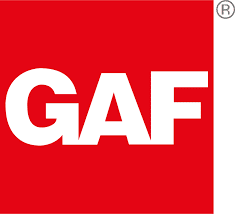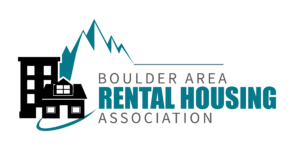Colorado homeowners and business owners are no strangers to the whims of nature. Among the various weather challenges, windstorms stand out, known for their ability to wreak havoc on the sturdiest of structures. Roof damage, a common aftermath of these gusty intruders, can range from minor annoyances to significant structural threats. This article aims to guide you through the crucial steps to effectively address and repair wind-induced roof damage in Colorado.
Understanding Wind Damage in Colorado
The climate in Colorado is diverse and complex, creating a breeding ground for strong winds and storms. In regions like the Front Range, the interaction between the mountainous terrain and the plains generates unique wind patterns that can be particularly harsh on residential and commercial structures.
The eastern plains face frequent and relentless gusts, averaging speeds of 15-20 mph, while the mountain valleys can experience funneling winds that reach hurricane-force levels. Even the Denver metro area is no stranger to strong winds, with recorded gusts exceeding 100 mph in some years.
Understanding these local climate conditions can be helpful for homeowners and business owners to prepare and respond effectively to potential wind damage.
How Wind Damages Roofs
Wind damage to roofs manifests in several ways. Initially, it might appear as minor as a few loose shingles. However, over time, even moderate winds can exacerbate these issues, leading to more significant damage like exposed underlayment or damaged flashing. This progression underscores the importance of addressing wind damage promptly and effectively.
The impact of wind on a roof is not uniform. The edges, corners, and ridge lines are typically more vulnerable due to higher wind pressures. The material and age of the roof also play a crucial role in how it withstands wind. Older roofs or those made with less durable materials are more susceptible to damage, emphasizing the need for regular maintenance and timely upgrades.
Identifying Roof Damage After a Windstorm
The aftermath of a windstorm can be unsettling, but knowing what to look for can bring clarity and prompt action. This includes the following:
- Bald Patches: Over time, shingles can lose their protective granules, leading to bare spots. These bald patches are more than just cosmetic issues; they signify that your roof’s ability to repel water is compromised.
- Curled Edges: Shingles that are curling at the edges can be a sign of age, heat damage, or moisture issues underneath. Curling shingles are more susceptible to wind uplift and can easily break or become detached.
- Tears and Cracks: Look for shingles that are torn or cracked. These damages can occur due to heavy winds, falling debris, or material brittleness with age. Even small cracks can lead to significant water leakage over time.
- Clogged Gutters with Granules: A clear sign of shingle deterioration is an accumulation of granules in the gutters. Shingles shed their granules when they start to wear out, which then wash into the gutters during rain.
- Uneven Color on Shingles: Another indicator of granule loss is inconsistent coloring on the roof. Areas that appear lighter may have lost more granules, exposing the underlying material.
- Impact Marks from Hail: Hailstorms can leave round, distinct dents on shingles and other roof elements. These may vary in size and can significantly compromise the integrity of the shingle.
- Punctures by Debris: Windstorms can carry debris that might strike the roof, leaving punctures or larger gashes. These damages are often more severe and require immediate attention to prevent leaks.
- Water Stains on Ceilings or Walls: Dark or wet spots on the ceiling, especially after rain, are strong indicators of a leaky roof. These stains may be accompanied by peeling paint or swollen plaster.
- Dampness in the Attic: Inspect your attic for signs of moisture, such as wet insulation, damp rafters, or mold growth. Daylight visible through the roof boards is a clear sign of a potential leak source.
- Around Chimneys, Vents, and Skylights: Flashing is designed to seal and protect the seams around roof protrusions. Damaged flashing can include rusting, bending, or separation from the roof surface.
- Signs of Water Penetration: Look for water stains or moisture around the base of chimneys, vents, and skylights. This could indicate that the flashing is not adequately sealing the roof, allowing water to seep through.
- Loose or Exposed Roofing Nails: Over time, nails can become loose, especially after severe weather. Exposed nails can lead to leaks and also indicate that the shingle’s holding power is compromised.
- Sagging Roof Deck: A sagging roof deck is a serious issue indicating structural problems. This might be caused by long-term water infiltration that weakens the supporting structures.
- Gutter and Downspout Condition: Ensure that gutters and downspouts are not only clear of debris but are also in good condition. Damaged or improperly aligned gutters can lead to water backing up under shingles, causing damage.
Thoroughly inspecting these aspects of your roof can help you identify problems early and take appropriate action before they escalate into major issues. Remember, some damage might not be immediately visible and could require a professional inspection for a comprehensive evaluation.
We should point out that your safety should always be the primary concern when inspecting your roof after a windstorm. Avoid climbing onto the roof if it appears unstable or if you’re not comfortable with heights. Use binoculars to inspect the roof from the ground, and consider hiring a professional for a thorough inspection.
When to Call a Professional
If you notice signs of significant damage, or if you’re unsure of the extent of the damage, it’s time to call in a professional. They can conduct a thorough inspection and assess the need for repairs or replacement. Additionally, professional roofers have the expertise to spot less obvious damage that untrained eyes might miss. Here are a few other reasons on when to seek professional help:
- Multiple Areas of Damage: If you observe damage in multiple areas, especially after a severe weather event, it’s prudent to call a professional. They can conduct a comprehensive assessment to ensure all damage is identified and addressed.
- Major Structural Concerns: Should you suspect any structural damage, such as a sagging roof deck or significant leaks, a professional inspection is essential. Structural damage can pose serious safety risks and requires expert intervention.
- Inaccessibility or Steep Roofs: If your roof is particularly high, steep, or otherwise difficult to access safely, it’s best to call a professional. Roofing experts are equipped with the necessary safety gear and training to handle such conditions.
- Electrical Hazards: If there are downed power lines or you suspect electrical damage (such as exposed wires or electrical faults in your attic), it’s crucial to contact a professional. These situations can be extremely dangerous and should only be handled by qualified individuals.
- Complexity of the Damage: Some types of roof damage, such as compromised flashing around chimneys or skylights, require specialized knowledge to repair correctly. A professional roofer can ensure these repairs are done properly to prevent future leaks or issues.
- Identifying Underlying Issues: Professionals can identify not just the obvious damage, but also underlying issues that might not be immediately apparent to the untrained eye. This includes problems like inadequate ventilation, poor drainage, or previous substandard repairs.
- Assistance with Insurance Claims: If you plan to file an insurance claim for roof damage, a professional assessment can be invaluable. Roofing professionals can provide detailed reports and damage assessments that can support your claim, ensuring you receive the appropriate compensation. We have more on this in the following section.
- Warranty Preservation: If your roof is under warranty, attempting DIY repairs could void the warranty. Professional repairs ensure compliance with warranty conditions and can often extend the life of your roof.
- Quality and Durability of Repairs: Professional roofers have access to high-quality materials and have the expertise to ensure repairs are durable and effective. This provides long-term value and peace of mind, knowing your roof is well-maintained and secure.
Sometimes, homeowners and business owners may hesitate to call professionals, fearing the cost. However, delaying an expert evaluation can lead to more extensive damage and higher repair costs in the long run. Most reputable roofing companies offer free inspections, making it a wise choice to seek their advice after a severe windstorm.
Many homeowners’ and commercial business owners’ insurance policies cover wind damage. Here is a simplified step-by-step approach to filing a wind damage claim with your insurance company:
- Understand Your Policy: Familiarize yourself with the specifics of your homeowner’s insurance policy, including what types of roof damage are covered, deductibles, and coverage limits. Pay attention to any exclusions or limitations that might affect your claim.
- Filing a Claim: Report the damage to your insurance company promptly and document the damage thoroughly with photographs and videos. Keep a detailed inventory of all damages and related costs, including any emergency repairs.
- Insurance Adjuster’s Visit: Prepare for the adjuster’s inspection by having all documentation and evidence of damage ready. Consider having a professional roofing contractor’s estimate on hand for comparison.
- Claim Disputes: If there’s a discrepancy between the adjuster’s assessment and your contractor’s estimate, don’t hesitate to dispute the claim. You can seek a second opinion or hire an independent adjuster if necessary.
- Claim Approval and Repair Process: Once your claim is approved, understand the payout timeline and process. Choose a reputable contractor for repairs who is comfortable working with your insurance company’s reimbursement process.
- Post-Repair Documentation: After repairs are completed, document the work thoroughly and keep all invoices and correspondence. This documentation is important for future claims or if you plan to sell your home.
This streamlined approach provides a clear overview of each step in navigating insurance claims for roof damage.
Final Thoughts
Taking immediate action after wind damage is crucial in mitigating further harm to your property. Prioritize safety above all else, implement temporary solutions if feasible, and document everything for insurance purposes. Remember, these initial steps are just the beginning of the repair process. Professional assessment and repair are necessary to ensure the long-term safety and integrity of your roof and home.
If you have any questions on how to approach roof damage from wind, contact Axe Roofing today! Sometimes navigating roof damage and the insurance process can be complex, but you do not need to walk that road alone. Reach out so we can help and walk alongside you.
Related Articles:














